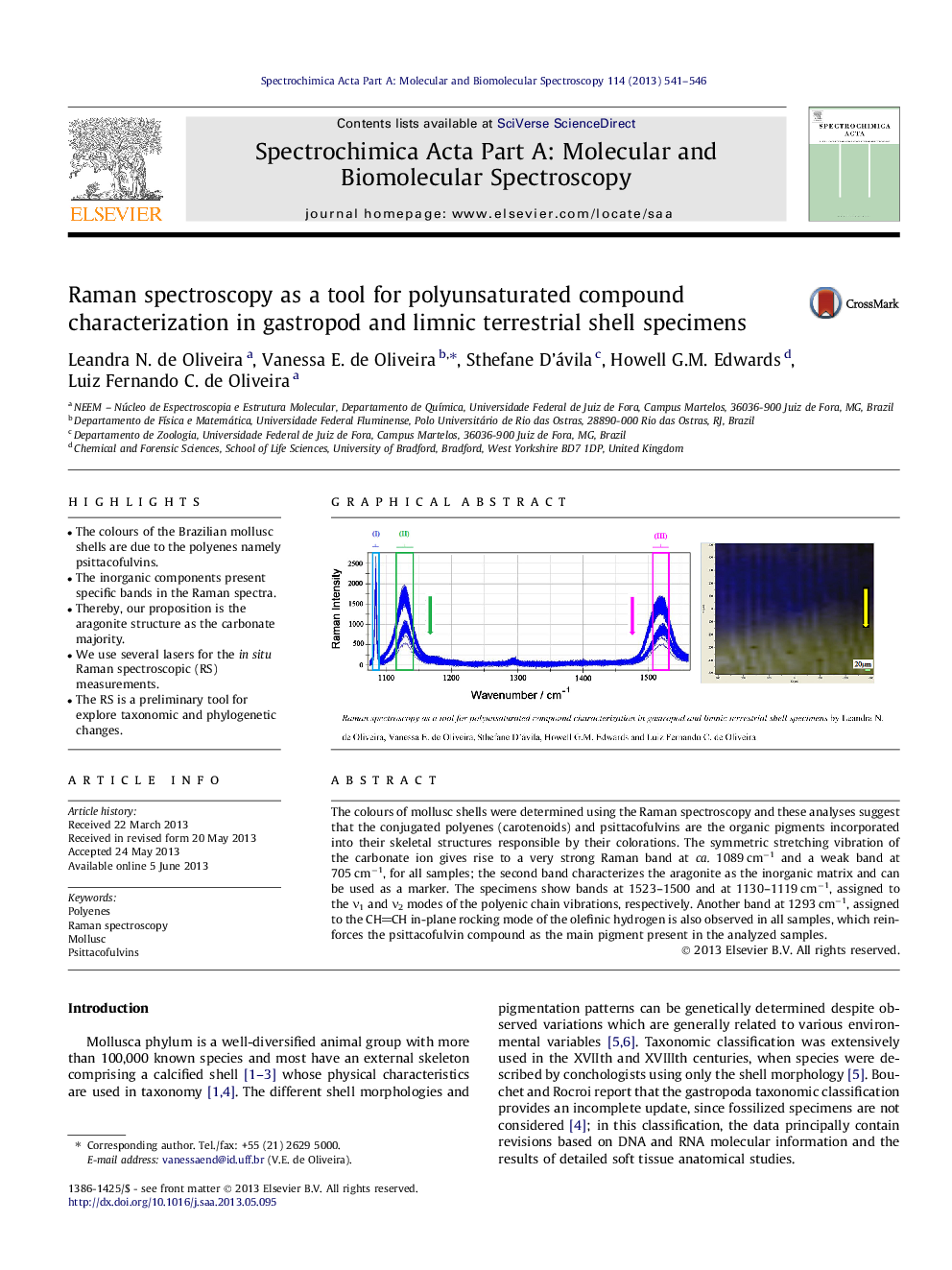| کد مقاله | کد نشریه | سال انتشار | مقاله انگلیسی | نسخه تمام متن |
|---|---|---|---|---|
| 1231327 | 1495254 | 2013 | 6 صفحه PDF | دانلود رایگان |

• The colours of the Brazilian mollusc shells are due to the polyenes namely psittacofulvins.
• The inorganic components present specific bands in the Raman spectra.
• Thereby, our proposition is the aragonite structure as the carbonate majority.
• We use several lasers for the in situ Raman spectroscopic (RS) measurements.
• The RS is a preliminary tool for explore taxonomic and phylogenetic changes.
The colours of mollusc shells were determined using the Raman spectroscopy and these analyses suggest that the conjugated polyenes (carotenoids) and psittacofulvins are the organic pigments incorporated into their skeletal structures responsible by their colorations. The symmetric stretching vibration of the carbonate ion gives rise to a very strong Raman band at ca. 1089 cm−1 and a weak band at 705 cm−1, for all samples; the second band characterizes the aragonite as the inorganic matrix and can be used as a marker. The specimens show bands at 1523–1500 and at 1130–1119 cm−1, assigned to the ν1 and ν2 modes of the polyenic chain vibrations, respectively. Another band at 1293 cm−1, assigned to the CHCH in-plane rocking mode of the olefinic hydrogen is also observed in all samples, which reinforces the psittacofulvin compound as the main pigment present in the analyzed samples.
Figure optionsDownload as PowerPoint slide
Journal: Spectrochimica Acta Part A: Molecular and Biomolecular Spectroscopy - Volume 114, October 2013, Pages 541–546